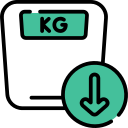Q. What is the procedure for removing a lung?
Doctor Answer is medically reviewed by SecondMedic medical review team.
Removing a lung, also known as a pneumonectomy, is a major surgery done to treat severe lung diseases like lung cancer, extensive infections, or advanced lung conditions like emphysema or pulmonary fibrosis. It's a complex procedure that requires careful planning and execution by a skilled surgical team. Here's a detailed overview of the procedure:
1. Preparation:
- Before the surgery, you'll undergo several tests such as blood tests, imaging scans (like CT scans), and pulmonary function tests to assess your overall health and lung function.
- You'll meet with your surgical team, including the surgeon, anesthesiologist, and nurses, to discuss the procedure, potential risks, and what to expect during recovery.
- You may need to stop taking certain medications, particularly blood thinners, in the days leading up to surgery.
2. Anesthesia:
- On the day of the surgery, you'll be taken to the operating room and given general anesthesia to make sure you're completely unconscious and pain-free during the procedure.
- Once you're asleep, a breathing tube will be inserted into your windpipe to help you breathe during surgery.
3. Incision:
- The surgeon will make an incision on the side of your chest, typically between the ribs, to access the lung.
- The size and location of the incision may vary depending on your specific condition and the surgical approach chosen by your surgeon.
4. Accessing the Lung:
- After the incision is made, the surgeon will carefully move aside muscles and other tissues to reach the affected lung.
- Specialized instruments and techniques may be used to minimize damage to surrounding tissues and organs.
5. Detaching the Lung:
- The surgeon will then carefully detach the blood vessels, bronchi (airways), and other structures connecting the lung to the body.
- This step requires precision to avoid damaging nearby structures like major blood vessels and the heart.
6. Removal of the Lung:
- Once the connections are detached, the surgeon will gently lift the lung out of the chest cavity.
- Any remaining tissue connections will be carefully severed until the lung is completely free.
7. Closure:
- After the lung is removed, the surgeon will thoroughly inspect the chest cavity to ensure there's no bleeding or other issues.
- Any bleeding vessels will be carefully cauterized or stitched closed.
- The chest wall incision will be closed with sutures or staples, and a sterile dressing will be applied.
8. Recovery:
- You'll be taken to the recovery room and closely monitored as you wake up from anesthesia.
- Pain medication will be provided to keep you comfortable during the initial recovery period.
- You'll likely spend several days in the hospital, during which time your medical team will closely monitor your breathing, pain levels, and overall recovery progress.
9. Postoperative Care:
- After being discharged from the hospital, you'll need to follow your surgeon's instructions for at-home care, including wound care, pain management, and activity restrictions.
- You'll also need to attend follow-up appointments with your surgical team to monitor your recovery and address any concerns.
10. Rehabilitation:
- Depending on your overall health and specific needs, you may be referred to a pulmonary rehabilitation program to help improve your lung function and overall physical conditioning.
It's important to note that pneumonectomy is a major surgery with significant risks and potential complications, including bleeding, infection, and adverse reactions to anesthesia. Your surgical team will take every precaution to minimize these risks and ensure the best possible outcome.
Related Questions
-
Gastroenterology Why does lying on my left side, immediately and
-
What is the colon cancer survival rate? | Secondmedic
-
Are there any preventive measures to avoid melena? | Secondmedic
-
Gastroenterology How do you deal with frequent flatulence?
-
How does nausea affect the body and why do we experience it? | Secondmedic
-
What lifestyle changes can I make to alleviate acid reflux symptoms? | Secondmedic











